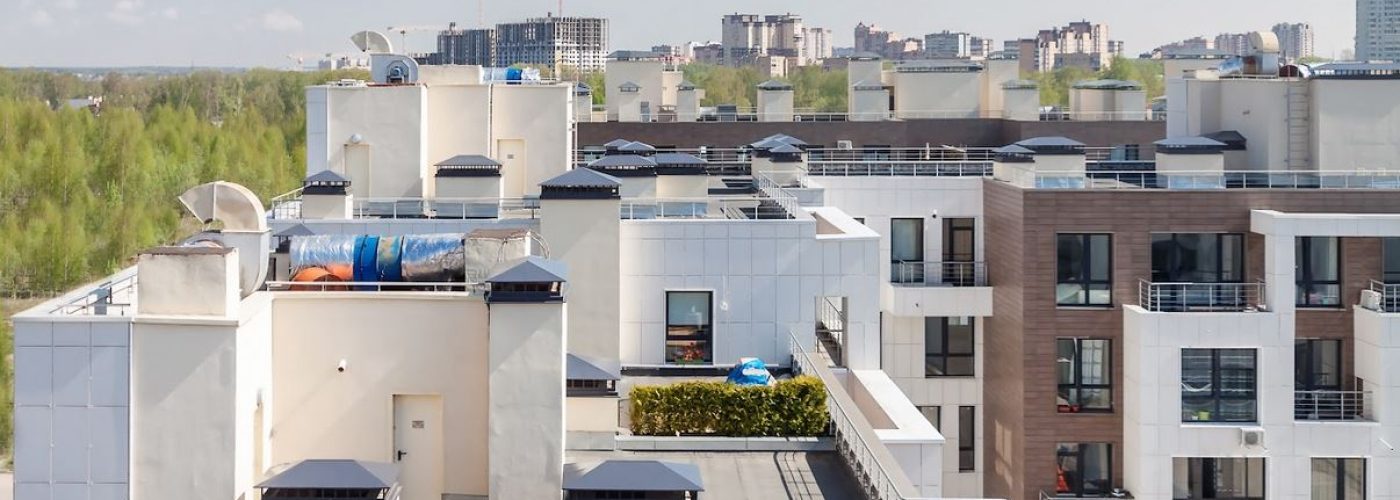Flat roofs are currently among the top trending commercial and residential property designs. Moreover, interior décor and property magazines now feature flat roof properties in their listings. This might lead you to wonder: ‘What is so tempting about flat roofs that slanted roof designs are missing?’ Well, flat roofs are popular for several reasons.
Flat roofs provide a cheap alternative for small businesses needing a tiny space for operations. However, small space units became increasingly hard to achieve with sloped and curved roofing designs. The desire for small living units due to changing lifestyles and the growing need for small office spaces has fuelled the demand for flat roof properties. The trend is primarily driven by consumer demand for clean, simplistic, and futuristic designs for properties with flat roofs. Apart from the simplistic aesthetic appeal, especially when paired with OptiLight roof windows or similar stylish ones, flat roofs are cheaper and easy to maintain.
Additionally, insurance companies have started to offer personalised policies for businesses that construct, repair, maintain, or retrofit flat roofs, which is a crucial consideration when hiring the right contractor. The cover protects the numerous industry-related risks.
You may be wondering how to go about installing a flat roof. Here are six factors to consider:
- Slope
Your roof’s slope determines the rate of flow of precipitation. The greater the elevation, the higher the velocity. A flat roof is not entirely ‘flat’ to facilitate gravity-aided drainage. A slight slope also prevents leaves and other foreign debris from accumulating on the roof.
Therefore, the flat roof should have a slight and well-balanced tilt to prevent stagnation of water and debris, which is essential to its longevity. If you’re brainstorming on a better design for your roof or planning a flat roof replacement, it would be proactive to consult a qualified contractor.
- Roof Drainage
If it’s relatively calm where your home is, you’ll have to do regular cleaning to remove debris and leaves that accumulate on the flat roof. A regular cleaning routine helps to ease the flow of water from the roof to the gutters, but you must determine whether the existing drainage system works well with your flat roof.
The process should be easy if you plan to erect a building right from the foundation. However, if you plan to replace a sloping roof with a flat one, it would be advisable to consult property developers. The contractors will determine if the flat roofing will match your roof drainage system and advise you about any modifications that will be needed.
- Structural Loads
Flat roofs provide enough space at the top for water storage tanks and even water pools. Yet they also have a structural load limit. You may have opted for a flat roof because of its better storage space. Thus, if you’re planning on having more loads on top of the roof, ensure that it’s constructed using the correct materials to withstand enough pressure. This will ensure that the roof remains durable.
- The R-Value
R-value defines a roof’s resistance to heat transfer. High R-values insulate heat properly, and the same is true vice-versa. The R-value also depends on the roofing materials.
A relatively hot area requires roofing materials with high R-values for proper insulation, whereas a house in a colder region can do with lower R-values. A good contractor should be able to guide you on the specific R-values needed for your roof.
- The Wind
The edges of a flat roof tend to be sensitive to strong winds compared to a slanted roof. Hence, it would be better to assess the wind speed in your location. If the place is windy, invest in more durable building materials to withstand the pressure and ensure your roof isn’t blown easily at the first sign of a storm.
- Roof Decking
Before settling for a flat roof, check the deck’s structural integrity below the older roof. A deck that adequately bears the weight of a slanted roof should also be capable of supporting a flat roof. A heavy or unstable roofing deck can affect the stability of a flat roof. However, this shouldn’t be a problem if you can reconstruct your roof decking to uphold structural integrity.
Conclusion
When choosing a new roof, you’d want to consider flat designs because they’re simplistic, cheaper, and easy to maintain than curved and slanted roofs. Before installation, consider factors like drainage, maintenance routing, and the maximum load the roof can hold. For the best results, always go for a roofing contractor with vast expertise in installing flat roofs. It’s better if they’re insured to cover for any potential damage.






